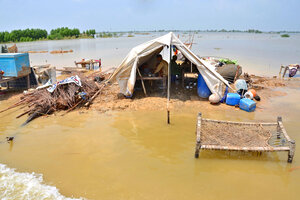
The last time Pakistan faced catastrophic floods, in 2010, the international scientific community wasn’t yet prepared to draw a straight line to climate change. Silt deposits record that the Indus River menaced earlier civilizations, too. Nor had the world begun to grapple practically with how climate change would recast questions ranging from global cooperation to urban design.
All of that has now changed. A third of Pakistan is underwater – the result, scientists agree, of months of record-breaking heat that melted glaciers in the Himalayas and intensified the annual monsoon. The humanitarian impact is enormous. More than 1,100 people have died and tens of millions have been displaced. One town measured 67 inches of rain in a single day.










